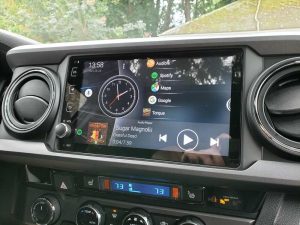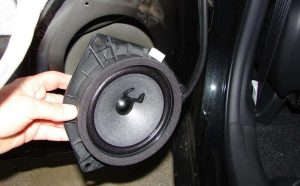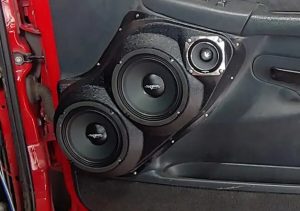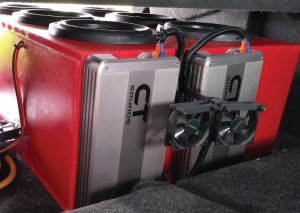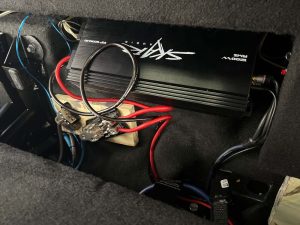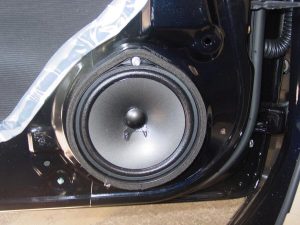Subwoofers deliver the deep, rumbling bass that transforms music, movies, and gaming into immersive experiences. Choosing between an active and a passive subwoofer shapes your audio setup’s performance, cost, and flexibility. This guide breaks down the differences, benefits, and drawbacks of each type to help you decide which fits your needs. Whether you’re building a home theater, upgrading your car audio, or setting up a studio, understanding these options ensures you get the best sound for your space and budget.
Contents
- What Is a Subwoofer?
- Active Subwoofers: Built-In Power for Easy Setup
- Passive Subwoofers: Flexibility for Audio Enthusiasts
- Active vs Passive Subwoofers: Head-to-Head Comparison
- Factors to Consider When Choosing a Subwoofer
- Tips for Optimizing Your Subwoofer Performance
- Common Myths About Subwoofers
- Active vs Passive Subwoofers in Different Scenarios
- FAQs About Active and Passive Subwoofers
- Conclusion
What Is a Subwoofer?
A subwoofer is a specialized speaker designed to reproduce low-frequency sounds, typically below 200 Hz. These frequencies, often felt more than heard, add depth to audio. Subwoofers enhance everything from the thump of a kick drum to the roar of an explosion in an action movie. They come in two main types: active and passive. Each operates differently, impacting how you integrate them into your audio system.
Why Low Frequencies Matter
Low frequencies create emotional impact. They make music feel alive and movies feel cinematic. Without a subwoofer, standard speakers struggle to produce these deep tones, leaving audio flat. Subwoofers fill this gap, delivering rich, powerful bass that elevates your listening experience.
Active Subwoofers: Built-In Power for Easy Setup
Active subwoofers, also called powered subwoofers, come with a built-in amplifier. This all-in-one design simplifies installation and makes them a popular choice for home theaters, gaming setups, and casual listeners.
How Active Subwoofers Work
An active subwoofer combines three key components:
- Speaker Driver: The cone that moves air to produce sound.
- Amplifier: Powers the driver, eliminating the need for an external amp.
- Crossover: Filters out high and mid-range frequencies, ensuring the subwoofer focuses on bass.
You connect an active subwoofer directly to your audio source, such as a receiver or preamp, using a line-level input like RCA or XLR. The built-in amp handles the rest, driving the speaker to produce deep bass.
Benefits of Active Subwoofers
Active subwoofers offer several advantages that make them appealing for most users.
Plug-and-Play Convenience
Active subwoofers require minimal setup. Plug them into a power outlet, connect them to your audio system, and adjust the settings. This ease of use suits beginners and those who want great sound without technical hassle.
Built-In Controls
Most active subwoofers include adjustable settings, such as volume, phase, and crossover frequency. These controls let you fine-tune the bass to match your room’s acoustics or personal taste. For example, you can dial down overpowering bass in a small room or boost it for a larger space.
Space-Saving Design
Since the amplifier is built-in, active subwoofers save space compared to passive setups that require separate components. This compact design fits well in apartments, small home theaters, or minimalist setups.
Consistent Performance
Manufacturers design the amplifier and driver to work together, ensuring optimal performance. This eliminates guesswork when pairing components, delivering reliable bass out of the box.
Drawbacks of Active Subwoofers
While active subwoofers shine in convenience, they have limitations.
Limited Customization
The built-in amplifier restricts your ability to upgrade or swap components. If you want a more powerful amp, you’re stuck with the one provided, unless you replace the entire subwoofer.
Higher Upfront Cost
Active subwoofers typically cost more than passive ones because they include the amplifier. For budget-conscious buyers, this can be a hurdle, especially for high-end models.
Power Dependency
Active subwoofers need a power outlet, which can limit placement options in your room or vehicle. This also makes them less practical for portable setups.
Best Uses for Active Subwoofers
Active subwoofers excel in:
- Home Theater Systems: Their easy setup and adjustable settings make them ideal for movies and TV.
- Gaming Rigs: Deep bass enhances explosions and soundtracks in video games.
- Small Spaces: Compact designs fit well in apartments or dorm rooms.
- Beginner Audio Setups: Plug-and-play simplicity suits those new to audio systems.
Passive Subwoofers: Flexibility for Audio Enthusiasts
Passive subwoofers lack a built-in amplifier, requiring an external one to function. This design offers greater control but demands more knowledge and equipment, making them a favorite among audiophiles and car audio enthusiasts.
How Passive Subwoofers Work
A passive subwoofer consists of a speaker driver housed in an enclosure. It relies on an external amplifier to supply power and a crossover to filter out non-bass frequencies. You connect the subwoofer to the amp using speaker wire, and the amp connects to your audio source.
Benefits of Passive Subwoofers
Passive subwoofers provide unique advantages for those willing to invest time and effort.
Customization Freedom
With a passive subwoofer, you choose the amplifier that best suits your needs. Want more power? Upgrade to a high-wattage amp. Need a specific sound profile? Pair it with an amp that matches your preferences. This flexibility allows you to tailor your system for optimal performance.
Cost-Effective Over Time
Passive subwoofers often cost less upfront than active models, as they don’t include an amplifier. If you already own a compatible amp, you save money. Even if you need to buy one, you can start with a budget-friendly option and upgrade later.
Scalability
Passive subwoofers integrate easily into larger audio systems. You can add multiple subwoofers to a single amp or use them in complex setups, such as multi-room audio or professional studios. This scalability suits enthusiasts who plan to expand their systems.
No Power Outlet Needed
Since passive subwoofers draw power from an external amp, they don’t need a dedicated power outlet. This makes them versatile for car audio or setups where outlets are scarce.
Drawbacks of Passive Subwoofers
Passive subwoofers come with challenges that may deter beginners.
Complex Setup
You need to select and connect a compatible amplifier and crossover. Mismatching components can lead to poor sound quality or equipment damage. This complexity requires research and technical know-how.
Extra Equipment Costs
If you don’t own an amplifier, you’ll need to buy one, which can offset the lower cost of the subwoofer. Crossovers and wiring also add to the expense, making the total investment potentially higher than an active subwoofer.
Larger Footprint
The external amplifier and additional wiring take up more space than an active subwoofer’s all-in-one design. This can clutter your setup, especially in small rooms.
Best Uses for Passive Subwoofers
Passive subwoofers thrive in:
- Car Audio Systems: Their flexibility and power efficiency suit custom vehicle setups.
- Audiophile Home Systems: Enthusiasts appreciate the ability to fine-tune components.
- Professional Studios: Scalability makes them ideal for recording or mixing environments.
- Large Venues: Multiple passive subwoofers can handle the demands of concert halls or clubs.
Active vs Passive Subwoofers: Head-to-Head Comparison
To choose the right subwoofer, compare key factors side by side.
Ease of Use
Active subwoofers win for simplicity. Their plug-and-play design requires minimal setup, making them ideal for beginners. Passive subwoofers demand more effort, as you must pair them with the right amplifier and crossover.
Cost
Passive subwoofers often have a lower initial cost, but you may spend more on additional components. Active subwoofers, while pricier upfront, include everything you need, offering better value for casual users.
Customization
Passive subwoofers provide unmatched flexibility. You can swap amplifiers or adjust settings to achieve your desired sound. Active subwoofers limit customization, as the built-in amp is non-upgradable.
Sound Quality
Both types can deliver excellent bass when properly configured. Active subwoofers offer consistent performance due to their integrated design. Passive subwoofers, when paired with a high-quality amp, can outperform active models, especially in high-end systems.
Space and Placement
Active subwoofers save space with their all-in-one design but require a power outlet. Passive subwoofers need more room for external components but offer placement flexibility, especially in cars or outlet-limited spaces.
Power Efficiency
Active subwoofers draw power directly, which can increase electricity costs in large setups. Passive subwoofers rely on the amp’s efficiency, giving you control over power consumption by choosing an energy-efficient model.
Factors to Consider When Choosing a Subwoofer
Selecting the right subwoofer depends on your goals, space, and budget. Here are key considerations to guide your decision.
Your Audio Goals
Ask yourself what you want to achieve. Are you building a home theater for movie nights? A car audio system for cruising? Or a studio for music production? Active subwoofers suit casual listeners and home theater buffs, while passive subwoofers appeal to enthusiasts who prioritize customization.
Room Size and Acoustics
Larger rooms need more powerful subwoofers to fill the space with bass. Active subwoofers with adjustable settings adapt well to different room sizes. Passive subwoofers, when paired with the right amp, can handle large venues but require careful tuning to avoid boomy bass in small spaces.
Budget
Set a budget that includes all components. Active subwoofers offer predictable costs, as they’re self-contained. Passive subwoofers may seem cheaper initially, but factor in the cost of an amplifier, crossover, and wiring to avoid surprises.
Existing Equipment
If you own an amplifier, a passive subwoofer leverages your existing gear, saving money. Without an amp, an active subwoofer simplifies your setup and reduces additional purchases.
Portability
For portable setups, like tailgating or outdoor events, active subwoofers are less practical due to their power requirements. Passive subwoofers, when paired with a portable amp, offer more flexibility.
Future Upgrades
Plan for the long term. If you want to expand your system, passive subwoofers scale better, allowing you to add more units or upgrade components. Active subwoofers, while convenient, limit future modifications.
Tips for Optimizing Your Subwoofer Performance
Whether you choose an active or passive subwoofer, proper setup maximizes sound quality. Follow these tips to get the most out of your bass.
Placement Matters
Place your subwoofer where bass sounds balanced. Corners often amplify bass but can make it boomy. Experiment with different spots, like along a wall or near your listening area, to find the sweet spot. For home theaters, placing the subwoofer near the front speakers creates a cohesive soundstage.
Adjust Settings
For active subwoofers, tweak the crossover, volume, and phase controls to blend the bass with your main speakers. Passive subwoofers rely on the amplifier’s settings, so ensure the amp’s crossover and gain match your subwoofer’s specifications.
Use Quality Cables
High-quality cables reduce signal loss and interference. For active subwoofers, use shielded RCA or XLR cables. For passive subwoofers, choose thick, low-gauge speaker wire to handle the power without distortion.
Calibrate Your System
Use a sound meter or calibration tool to balance your subwoofer with your speakers. Many AV receivers include auto-calibration software, like Audyssey or Dirac, that optimizes bass output for your room.
Manage Room Acoustics
Hard surfaces, like wood floors or glass walls, reflect bass, causing muddiness. Add rugs, curtains, or bass traps to absorb excess vibrations and tighten the sound. For car audio, sound-deadening materials reduce rattles and improve bass clarity.
Common Myths About Subwoofers
Misconceptions can cloud your decision. Let’s debunk a few myths about active and passive subwoofers.
Myth 1: Active Subwoofers Always Sound Better
Not true. Sound quality depends on the subwoofer’s design, components, and setup. A well-paired passive subwoofer and amplifier can rival or surpass an active model, especially in high-end systems.
Myth 2: Passive Subwoofers Are Outdated
Passive subwoofers remain popular in car audio, professional studios, and audiophile setups. Their flexibility and scalability keep them relevant, even with active models dominating home theater markets.
Myth 3: More Power Equals Better Bass
Power matters, but it’s not everything. A subwoofer’s driver size, enclosure design, and room acoustics play a huge role in bass quality. A 500-watt subwoofer in a poorly tuned room may sound worse than a 200-watt one optimized for the space.
Myth 4: You Only Need One Subwoofer
While one subwoofer works for most setups, multiple subwoofers create smoother bass distribution, especially in large rooms. Passive subwoofers make adding extra units easier, but active models can also be paired if your receiver supports it.
Active vs Passive Subwoofers in Different Scenarios
Let’s explore how active and passive subwoofers perform in specific use cases to help you visualize their real-world applications.
Home Theater
For movie lovers, active subwoofers are the go-to choice. Their built-in controls let you adjust bass to emphasize cinematic effects, like explosions or dramatic soundtracks. Models like the SVS SB-1000 or Klipsch R-120SW deliver punchy, room-filling bass with minimal setup. Passive subwoofers work if you have a high-end AV receiver with dedicated subwoofer outputs, but they’re less common in home theater due to the extra equipment needed.
Car Audio
Passive subwoofers dominate car audio. Brands like JL Audio and Kicker offer models that pair with compact, high-efficiency amplifiers, maximizing bass in tight spaces. The ability to customize power and tuning makes passive subs ideal for car enthusiasts who want booming bass tailored to their vehicle. Active subwoofers, like the Rockville RW10CA, are gaining traction for their slim, under-seat designs, but they’re less common due to power and space constraints.
Music Production
In studios, passive subwoofers shine when paired with professional-grade amplifiers. They allow producers to fine-tune bass for accurate mixing, critical for genres like EDM or hip-hop. Active subwoofers, such as the Yamaha HS8S, are also popular for their reliability and flat frequency response, making them suitable for smaller studios or mobile setups.
Gaming
Gamers crave immersive audio, and active subwoofers deliver. Their deep bass enhances in-game effects, like gunfire or engine roars, without requiring complex setups. Passive subwoofers are less practical for gaming rigs, as most gaming audio systems don’t include separate amplifiers.
FAQs About Active and Passive Subwoofers
Can I Use an Active Subwoofer With a Passive One?
Yes, but it’s tricky. You need an AV receiver or processor that supports multiple subwoofer outputs and allows independent control. Ensure both subwoofers are calibrated to avoid uneven bass.
Do Passive Subwoofers Need a Crossover?
Yes. A crossover filters out high frequencies, ensuring the subwoofer only plays bass. Some amplifiers include built-in crossovers, but you may need a separate one for precise control.
Are Active Subwoofers Louder?
Not necessarily. Loudness depends on the subwoofer’s design, amplifier power, and enclosure. A passive subwoofer with a high-wattage amp can be louder than an active model with a weaker built-in amp.
Can I Upgrade an Active Subwoofer’s Amplifier?
No. The amplifier is integrated into the subwoofer’s design. To increase power, you’d need a new active subwoofer or switch to a passive model with an external amp.
Which Is Better for Small Rooms?
Active subwoofers are better for small rooms. Their compact design and adjustable settings make it easier to control bass and prevent overwhelming the space.
Conclusion
Choosing between an active and passive subwoofer boils down to your needs, budget, and audio goals. Active subwoofers offer convenience, making them perfect for home theaters, gaming, and beginner setups. Passive subwoofers provide flexibility, ideal for car audio, studios, and audiophiles who love customizing their systems. Consider your space, existing equipment, and long-term plans to pick the right one. With proper setup and optimization, either type can deliver the heart-pounding bass that brings your audio to life.
Ready to upgrade your sound? Explore top active and passive subwoofer models from brands like SVS, JL Audio, or Klipsch, and start building the audio system of your dreams today.
